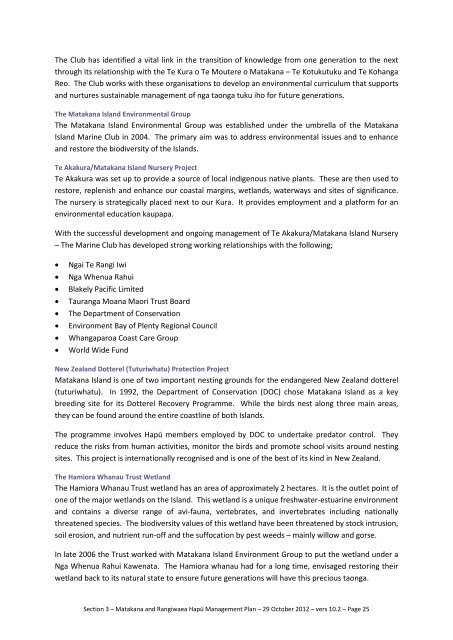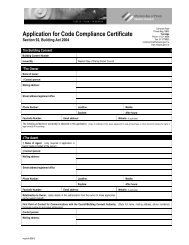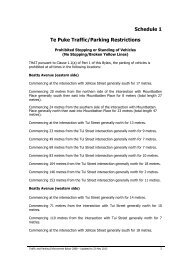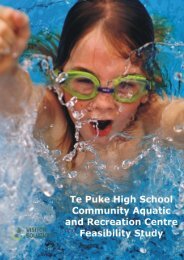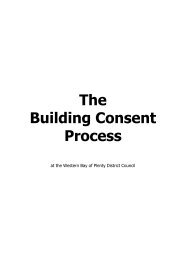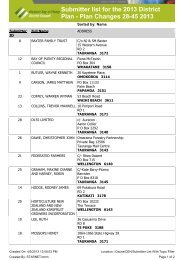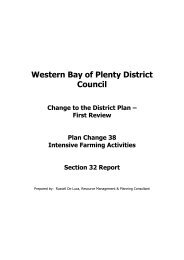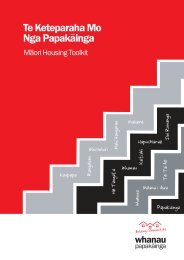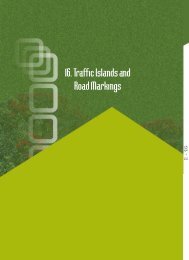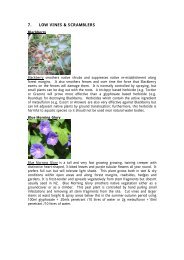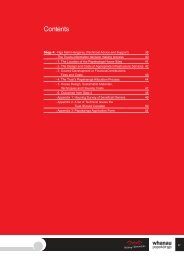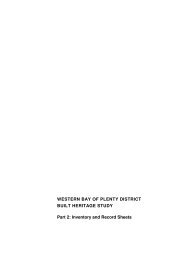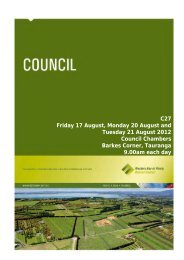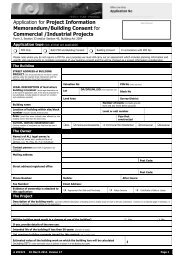Harakeke, Pingao, Kawakawa, Karamu These taonga plants have ...
Harakeke, Pingao, Kawakawa, Karamu These taonga plants have ...
Harakeke, Pingao, Kawakawa, Karamu These taonga plants have ...
Create successful ePaper yourself
Turn your PDF publications into a flip-book with our unique Google optimized e-Paper software.
The Club has identified a vital link in the transition of knowledge from one generation to the next<br />
through its relationship with the Te Kura o Te Moutere o Matakana – Te Kotukutuku and Te Kohanga<br />
Reo. The Club works with these organisations to develop an environmental curriculum that supports<br />
and nurtures sustainable management of nga <strong>taonga</strong> tuku iho for future generations.<br />
The Matakana Island Environmental Group<br />
The Matakana Island Environmental Group was established under the umbrella of the Matakana<br />
Island Marine Club in 2004. The primary aim was to address environmental issues and to enhance<br />
and restore the biodiversity of the Islands.<br />
Te Akakura/Matakana Island Nursery Project<br />
Te Akakura was set up to provide a source of local indigenous native <strong>plants</strong>. <strong>These</strong> are then used to<br />
restore, replenish and enhance our coastal margins, wetlands, waterways and sites of significance.<br />
The nursery is strategically placed next to our Kura. It provides employment and a platform for an<br />
environmental education kaupapa.<br />
With the successful development and ongoing management of Te Akakura/Matakana Island Nursery<br />
– The Marine Club has developed strong working relationships with the following;<br />
• Ngai Te Rangi Iwi<br />
• Nga Whenua Rahui<br />
• Blakely Pacific Limited<br />
• Tauranga Moana Maori Trust Board<br />
• The Department of Conservation<br />
• Environment Bay of Plenty Regional Council<br />
• Whangaparoa Coast Care Group<br />
• World Wide Fund<br />
New Zealand Dotterel (Tuturiwhatu) Protection Project<br />
Matakana Island is one of two important nesting grounds for the endangered New Zealand dotterel<br />
(tuturiwhatu). In 1992, the Department of Conservation (DOC) chose Matakana Island as a key<br />
breeding site for its Dotterel Recovery Programme. While the birds nest along three main areas,<br />
they can be found around the entire coastline of both Islands.<br />
The programme involves Hapū members employed by DOC to undertake predator control. They<br />
reduce the risks from human activities, monitor the birds and promote school visits around nesting<br />
sites. This project is internationally recognised and is one of the best of its kind in New Zealand.<br />
The Hamiora Whanau Trust Wetland<br />
The Hamiora Whanau Trust wetland has an area of approximately 2 hectares. It is the outlet point of<br />
one of the major wetlands on the Island. This wetland is a unique freshwater-estuarine environment<br />
and contains a diverse range of avi-fauna, vertebrates, and invertebrates including nationally<br />
threatened species. The biodiversity values of this wetland <strong>have</strong> been threatened by stock intrusion,<br />
soil erosion, and nutrient run-off and the suffocation by pest weeds – mainly willow and gorse.<br />
In late 2006 the Trust worked with Matakana Island Environment Group to put the wetland under a<br />
Nga Whenua Rahui Kawenata. The Hamiora whanau had for a long time, envisaged restoring their<br />
wetland back to its natural state to ensure future generations will <strong>have</strong> this precious <strong>taonga</strong>.<br />
Section 3 – Matakana and Rangiwaea Hapū Management Plan – 29 October 2012 – vers 10.2 – Page 25


